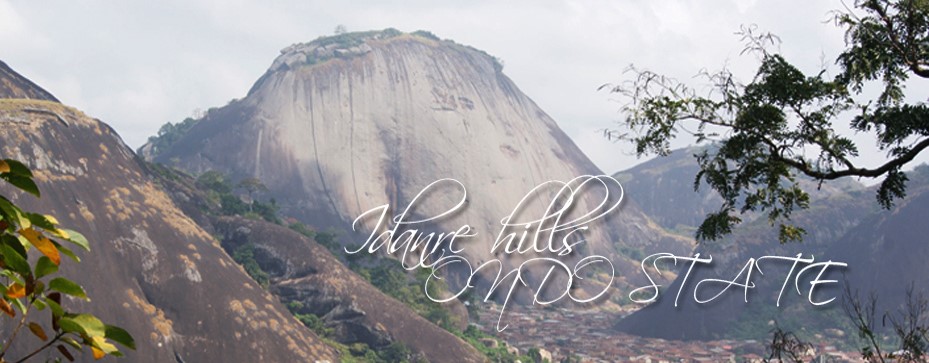The Idanre hills are popularly known as Oke Idanre. In Yoruba Language, Oke refers to a mountain or hill. The Idanre Hills are located in Idanre, Ondo State, in the southwestern part of Nigeria. Ondo State is comprised of different ethnic groups such as Akoko, Ilaje, Ondo, and Owo. The Ijaw people, a minority ethnic group, and the Ilaje are dwellers in the coastal areas of Ondo State. Another group in Oke-Igbo, also in Ondo State, speak a semblance of the Yoruba dialect widely spoken by the people of Ile-Ife, Osun State. Despite the variances in dialect spoken by these different ethnic groups in Ondo State, they are all classified as Yoruba, one of the three major tribes in Nigeria (the other two being Igbo and Hausa).
The Idanre Hills are one of the most amazing natural landscapes in Ondo State. These hills are located about 24 kilometers southwest of Akure, the state capital. Idanre Hills, beautiful and unique, is in a world of its own, and is often described as the undulating lands of Idanre. The town is divided into two; that is, the new settlement which is at the foot of the hills, and Oke- Idanre the old settlement at the top of the hills.
The hills in Idanre are home to an array of flora and fauna. The hills consist of high plains with extravagant valleys and is about three thousand feet above sea level. Landmarks in the area include the Owa’s Palace, the Agboogun footprint, Omi Apoara (thunder water), and burial mounds and grounds.
Located at the top of the hills is a sanctuary popularly called “the Sanctuary of Idanre”. It consists of about 640 steps. There are five resting spots along the steps to the top. At the top of the hill, there is a footprint known as the Agbooogun footprint, which is widely believed to fit every foot size or shape. The myth surrounding this footprint is that, if a person’s foot doesn’t fit in, he or she is evil.
The Ogun Festival, in honour of Ogun (iron god), is partly celebrated at the top of the hills every October. The festivals held in this area provide an opportunity to remember historical episodes in local Idanre history and its Yoruba ideology, folklore and alliance. The cultural vestige, in terms of traditional arts, can still be seen in addition to the old palace built around the seventeenth century. Apart from the notable festivals, which make the site a living tradition, the vegetation of the hills are also unique.
The hills serve as tourist attractions and are also used by film makers. A famous lore notes that the Idanre people lived on these hills for almost a millennium. Idanre Hills, however, has kept its qualities as the central power of the settlement pattern of Idanre people. The Idanre Hills form the core for the people in Idanre.
The hills also have international recognition. The longest poem by Noble Laureate, Professor Wole Soyinka, is titled, Idanre and other Poems. For visitors and tourists, the view from the top of the hills in Idanre is priceless.



